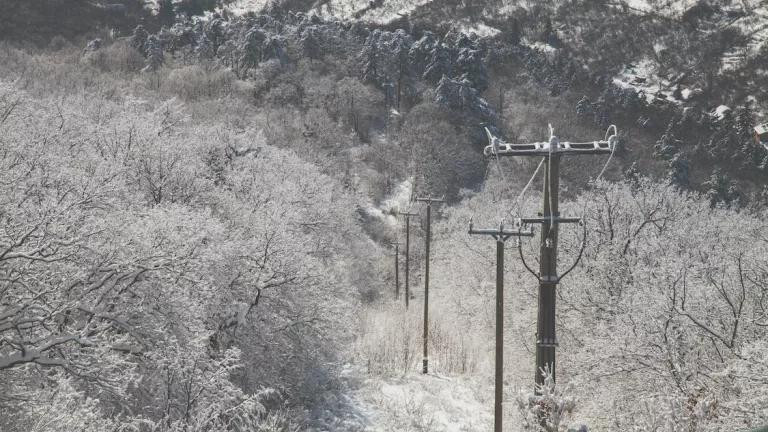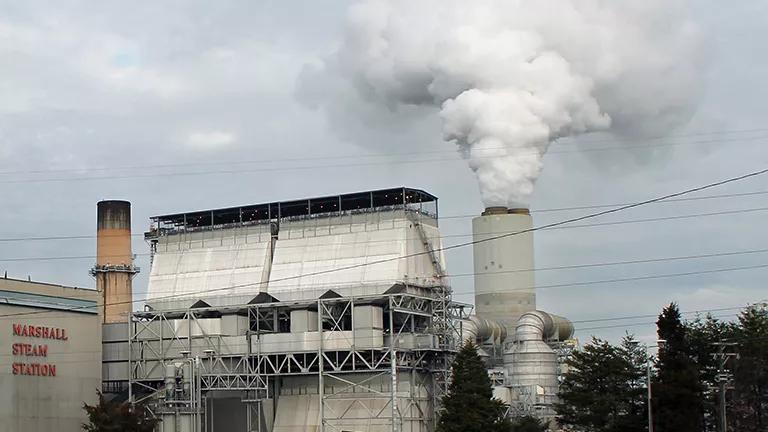Winter Storm Elliott Report Highlights the Risk of Natural Gas Failures
PJM’s report on Winter Storm Elliott found that gas generators were responsible for 70 percent of forced outages during December 2022. Climate change will only intensify future severe weather.

Peter Fazekas via Pexels
When the eastern United States was sheathed in snow and extreme cold during Christmas week last year, the electric grid was hit with a surprise. While they had planned for some generator outages, natural gas plants failed to the point where a quarter of PJM generation capacity was offline on Christmas Eve.
According to PJM’s newly released and much anticipated Winter Storm Elliott report, this included 40 gigawatts (GW) of coal and natural gas. By the end of the storm, natural gas plants had accounted for more than 70 percent of unplanned outages. Some gas plants could not get fuel; others’ equipment froze with the sudden drop in temperatures; still others failed to start at all.
Despite PJM’s pre-winter analysis showing that there should have been enough supply for the grid, “even under a combination of extreme and unlikely conditions,” the grid operator was forced to implement emergency procedures and put out a call for consumers to reduce energy consumption to avoid blackouts, according to the report. Neighbors to the south were not so lucky and experienced multiday outages.
It is a grid operator’s job to anticipate grid conditions. So how do winter storms keep threatening the reliability of the power grid? The answer is that both the climate and power system have changed significantly from 10 or 20 years ago. Now, large numbers of gas generators continue to fail during extreme weather. As the climate changes, weather changes have become more sudden and severe at the same time as the energy mix has become more weather-dependent.
Climate change and the changing resource mix have made old reliability metrics obsolete. At the same time, traditional planning methods have failed to harden the grid against severe weather. We can adapt our planning to meet changing circumstances, but not if we fail to clearly assess the problems that brought us to the brink of disaster during Elliott.
Installed reserve margins and inconsistent capacity accreditation methods have overstated the reliability of fossil fuels
The North American Electric Reliability Corporation's (NERC) winter 2022–2023 reliability assessment for PJM, released just about a month before Winter Storm Elliott, was short: “PJM expects no resource problems over the entire 2022–2023 winter peak season because installed capacity is almost three times the reserve requirement.”
The overbuilt PJM grid has heavily relied on its reserve margins to ensure reliability. Installed reserve margins are based on the capacity value that PJM expects for each type of supply resource. However, both capacity accreditation methods and reserve margins inherently miss the risk and overstate the reliability value of fossil fuels.
Winter Storm Elliott provides the perfect example of natural gas’s vulnerability to sudden drops in temperature, which resulted in frozen equipment, mechanical and electrical issues, and loss of fuel supply. The past two years of winter storms (Winter Storm Uri in 2021 and Elliott in 2022) have seen significant swaths of gas capacity taken out of service simultaneously, leaving people freezing and in the dark in their homes. PJM reported that during Winter Storm Elliott, gas generators were responsible for 70 percent of the forced outages during Christmas week.
As NRDC presented to PJM in June, the region has 86 GW of gas that experience an unaccounted-for 40 percent outage rate once every eight years. That suggests capacity market is overvaluing the gas fleet by around 4.3 GW and overstating installed reserve margin by at least 3 percent. Correlated outage risks during extreme weather conditions are significantly underrepresented in the existing reliability paradigm.
Stronger transmission planning could have saved customers money and kept more lights on
PJM’s transmission planning earned a D+ in a recent Americans for a Clean Energy Grid (ACEG) report. The ACEG report notes that the region has “limited interregional planning,” and because it does not proactively forecast generation and load over its 15-year planning horizon, “it fails on the most basic test of planning for the anticipated resource mix.” Despite PJM’s resource sharing with neighboring regions, better coordination and long-term transmission planning could have resulted in significant cost savings and access to wind power, which was generating above expected levels during the storm.
The American Council on Renewable Energy report The Value of Transmission During Winter Storm Elliott, analyzed the benefits of an additional 1 GW of interregional transmission expansion between each region during Winter Storm Elliott. The 1 GW of additional transmission capacity from PJM into Duke utility territory would have produced $80 million worth of electricity to customers who were without power in the Carolinas. Each additional gigawatt of transmission between MISO and PJM in Illinois would have produced an additional $27 million of economic value, just in the three days before Christmas morning.
Evaluation of multiple transmission benefit metrics, including congestion value, is a wise planning method for large-scale transmission. Multi-value transmission projects are evaluated in advance renewable integration, congestion and cost reduction, and improvements to grid resiliency. Indeed, PJM has a “Multi-Driver Approach Project” in its Regional Transmission Expansion Planning (RTEP) process. But ACEG notes that this process is rarely used: PJM studied a multi-value project under this approach for the first time in 2022. In its Winter Storm Elliott analysis, PJM reported zonal prices during the storm, noting that prices in excess of the $3,700 per megawatt-hour (MWh) price cap “can be attributed primarily to the impacts of congestion.” Meanwhile, PJM's siloed transmission planning separately develops projects for reliability and congestion relief. PJM does not proactively plan transmission and historically has not planned multi-value projects. Multi-value project evaluation could examine transmission as an insurance policy during extreme weather—one that can deliver capacity from less strained regions and reduce the financial burden on consumers. Instead, antiquated planning practices have driven up the cost of extreme weather events and failed to build large-scale projects that protect the grid.

Figure 62 from the PJM Winter Storm Elliott Report, showing zonal LMPs during the evening of December 23, 2022.
Climate change will continue to challenge the power grid
The PJM report highlighted a “convergence of circumstances” that pre-winter preparations failed to fully prepare for. According to the report, freezing temperatures caused up to six times as much lost gas supply than PJM predicted, based on historical Appalachian well freeze-offs. Electricity demand was underestimated by 8 percent. Traditionally considered a “firm” resource, gas generators accounted for more than 70 percent of unplanned power plant outages. Severe weather that had been considered “once in 10 years” or “once in a lifetime” will become more regular occurrences. This “convergence of circumstances” is likely to become a pattern, and the grid must be able to withstand severe events and avoid catastrophic failures from overreliance on fossil fuels.
So, what’s next?
There are near-term actions that can make the PJM grid more resilient:
- Align grid planning with a diverse resource mix: During Winter Storm Elliott, wind production delivered abundant cheap energy, above expectations. However, too much existing wind power is stuck on congested transmission lines, and future wind projects are stuck in the generation interconnection queue.
- Winterization: While the clean energy transition is underway, we can expect gas generators to continue to be a prominent part of the power mix. Generators must be held to a higher standard to ensure reliability during worsening severe weather.
- Follow through on penalties: Gas generators have received tens of billions of dollars in capacity payments over the years. It is generators’ responsibility to maintain performance when power is badly needed, like during a Christmas cold snap. The gas industry must be able to keep the promises that customers pay them to keep.



